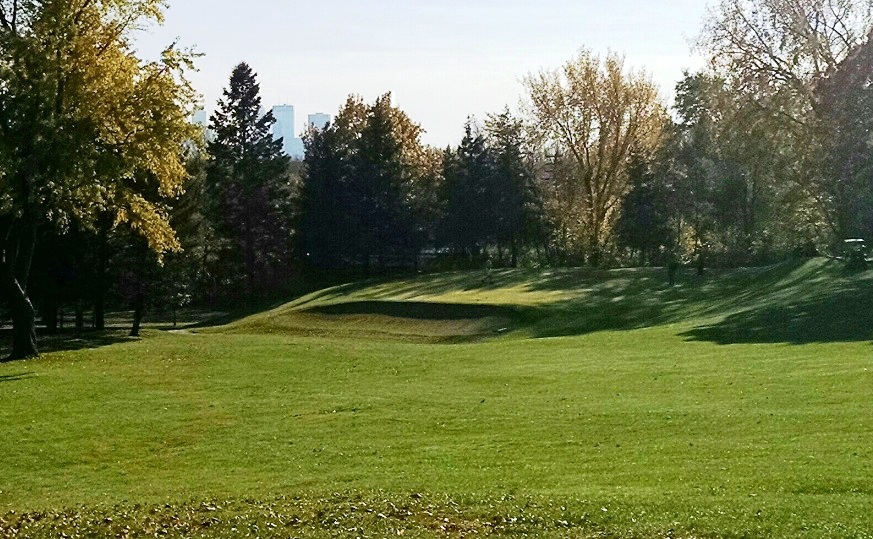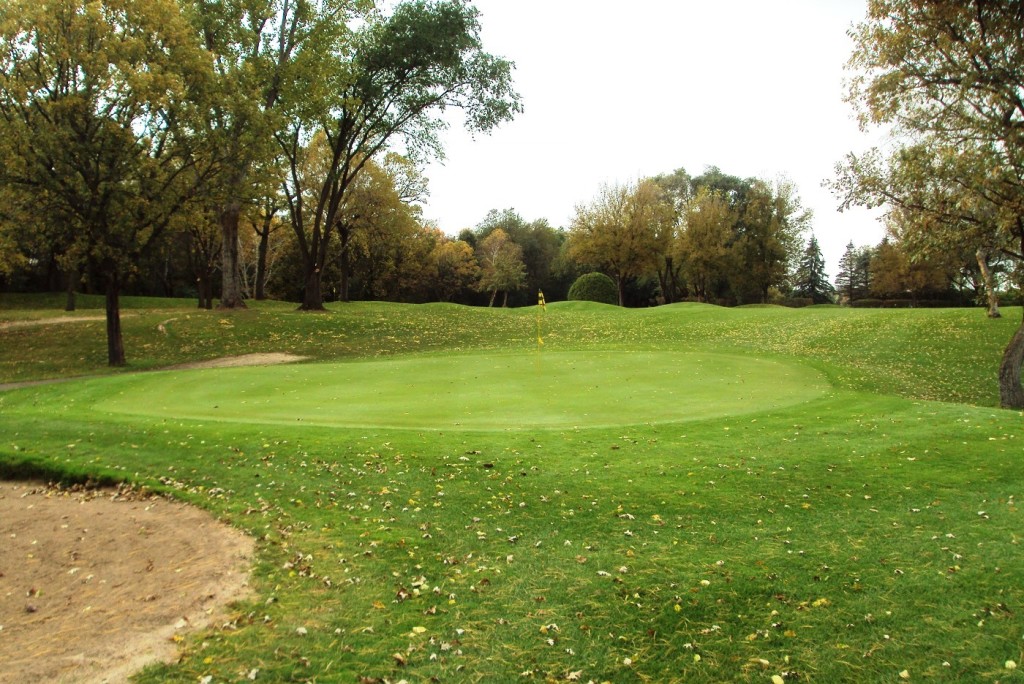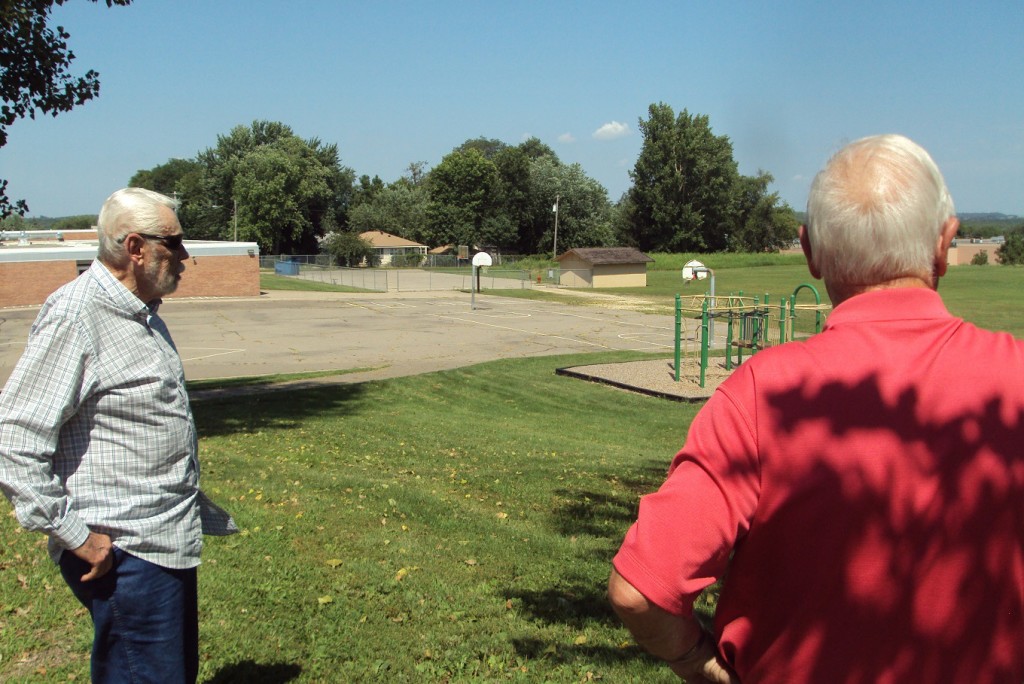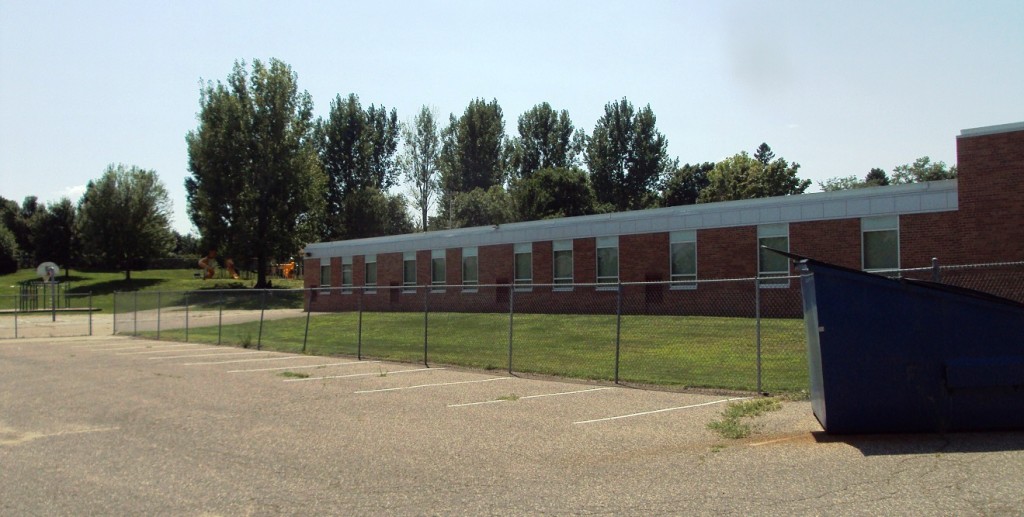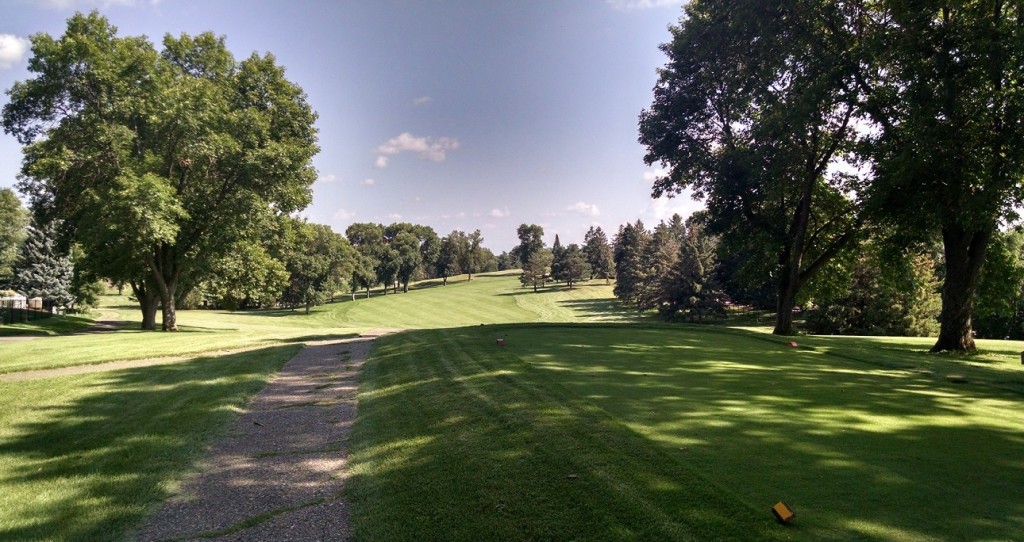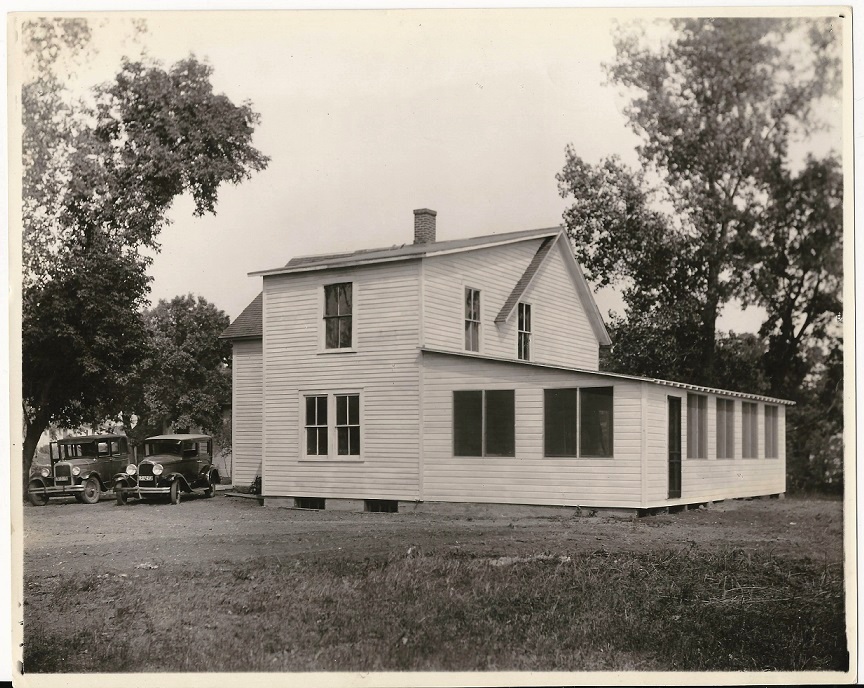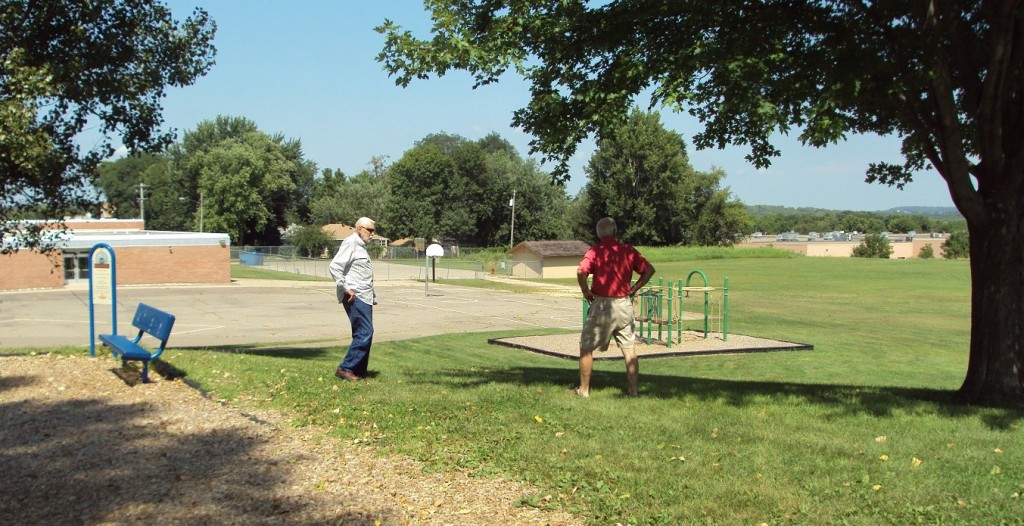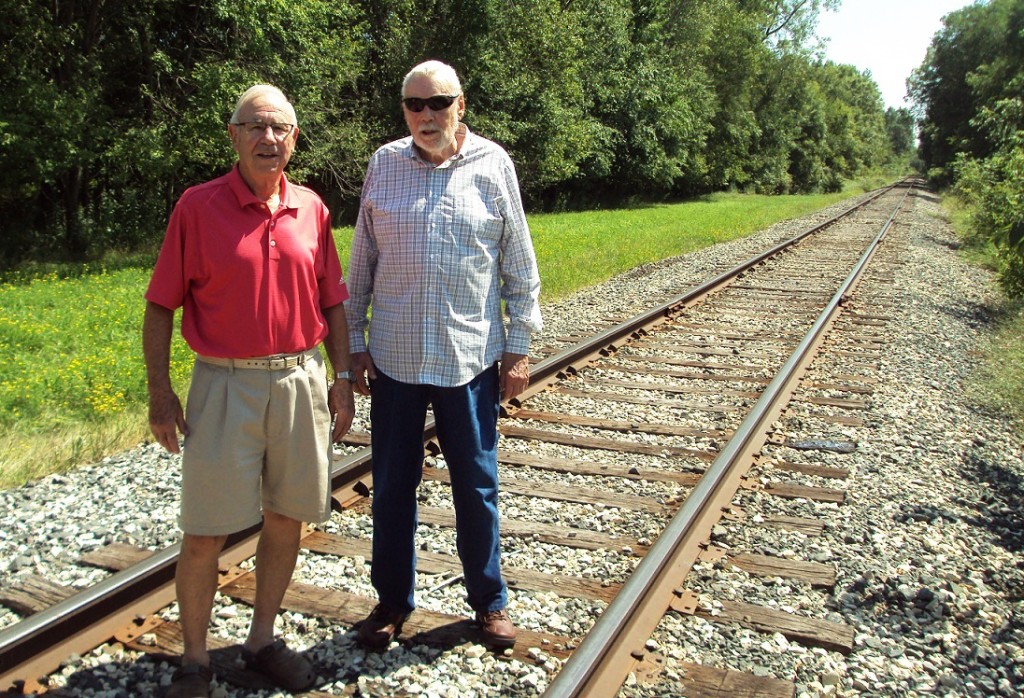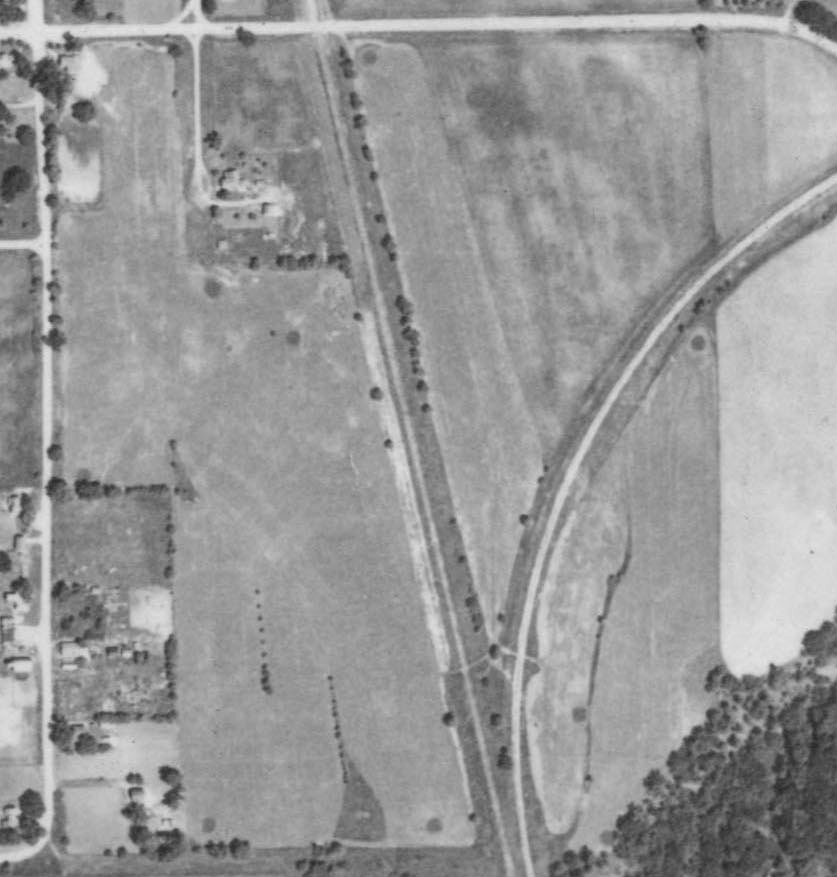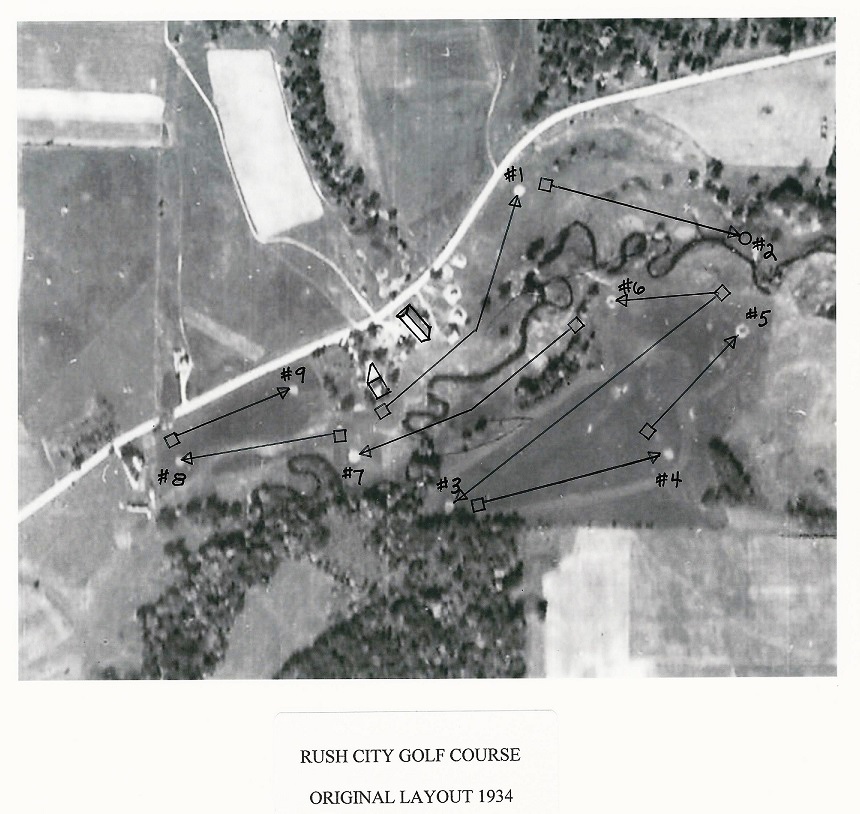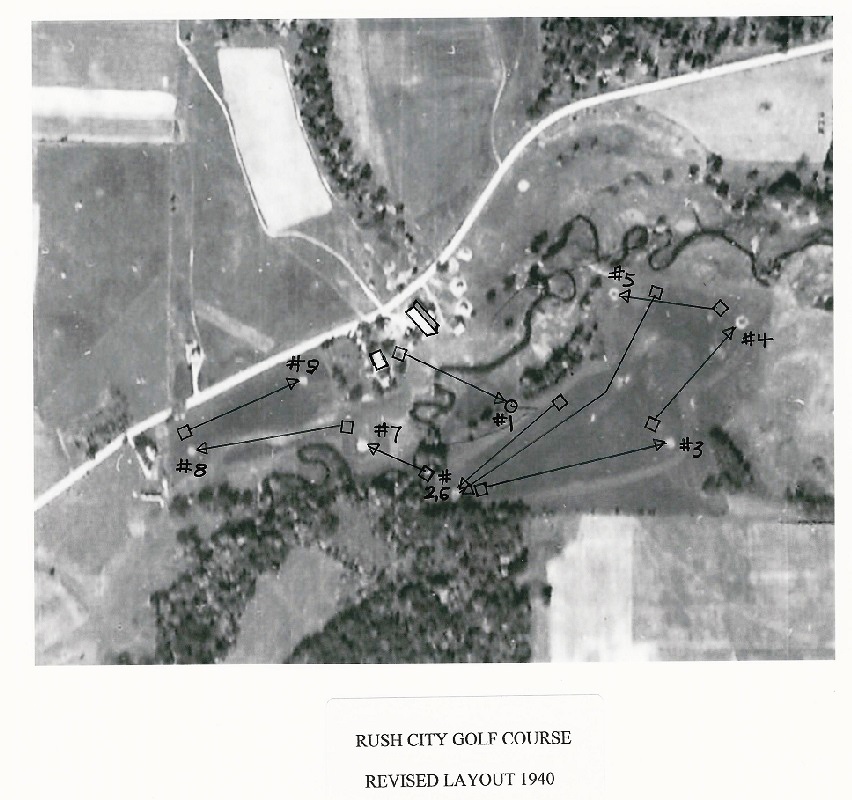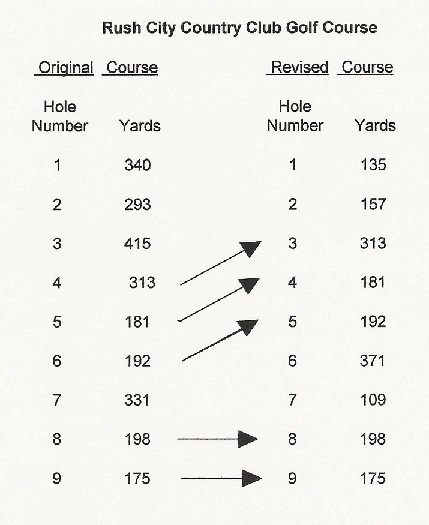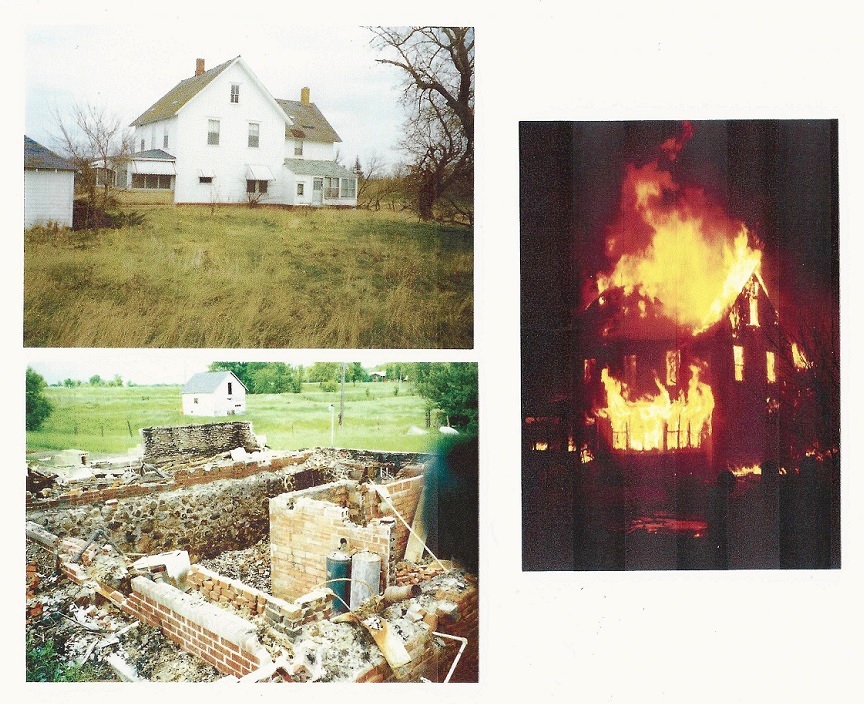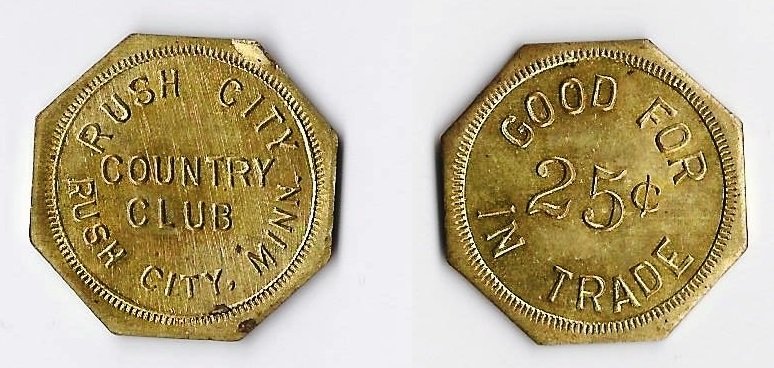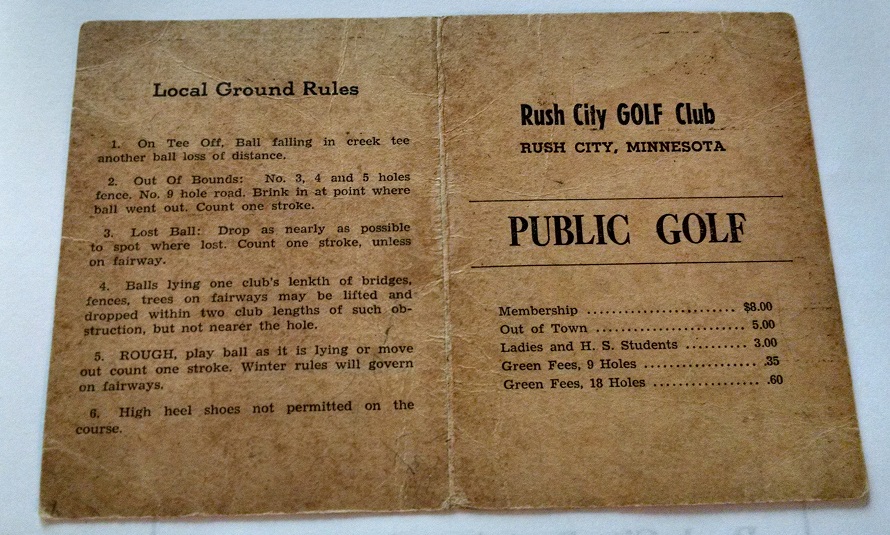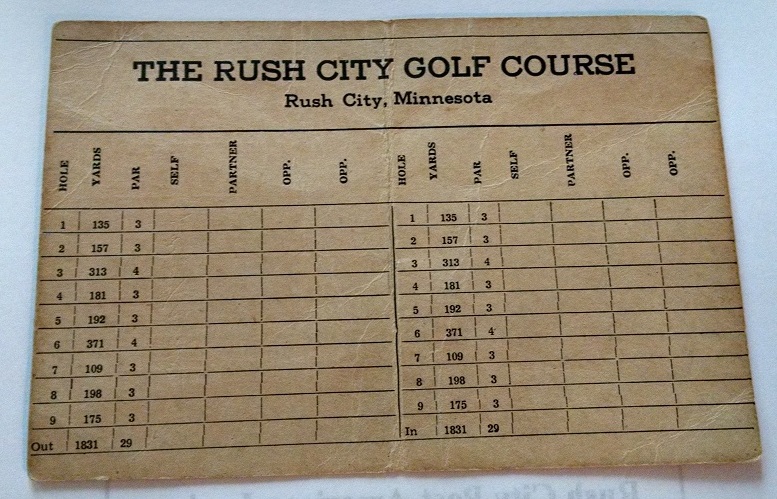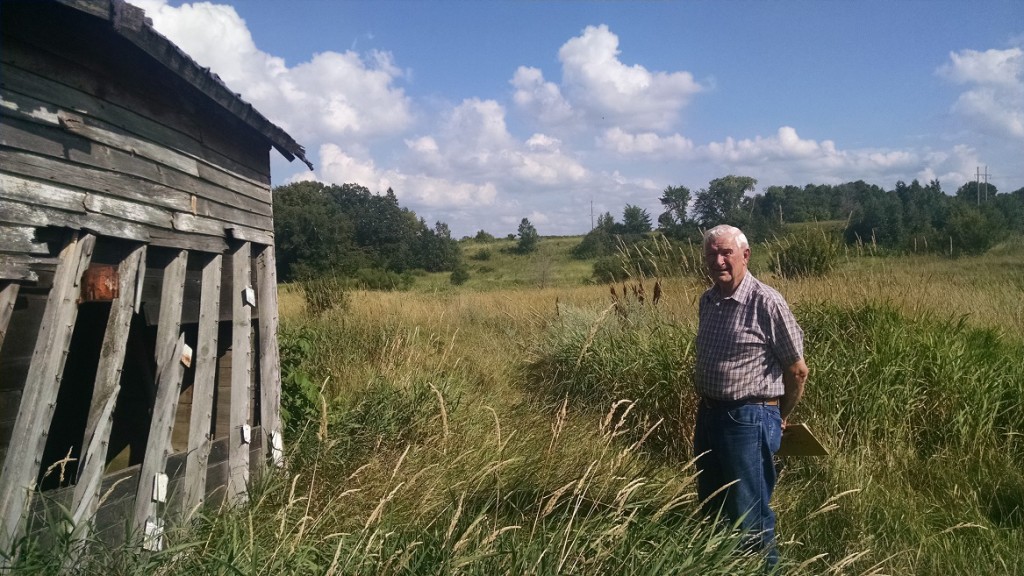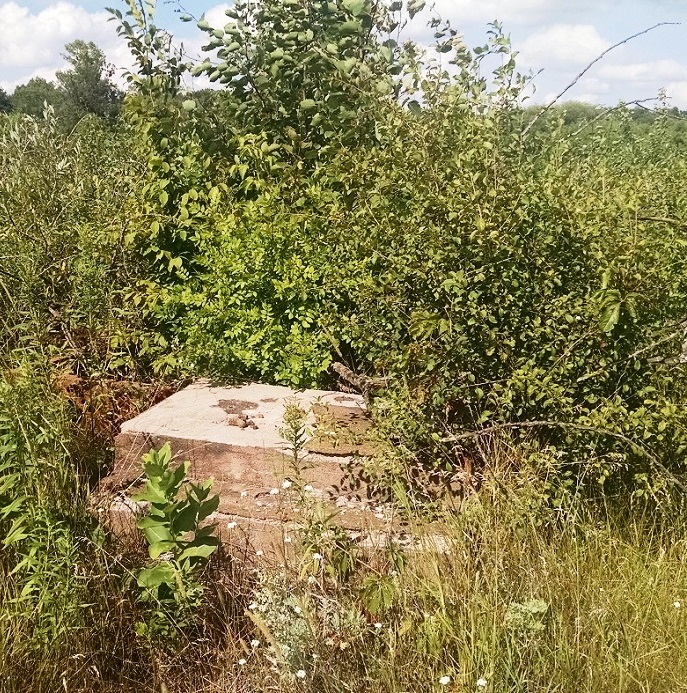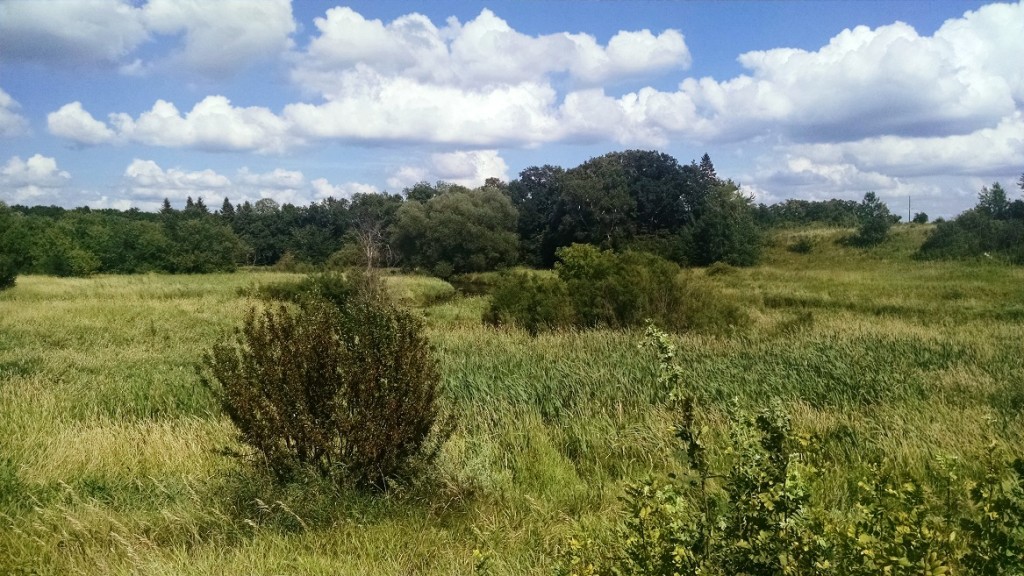Minnesota mass transit has its Green Line: an 11-mile light-rail route along University Avenue in Minneapolis and St. Paul. There are no golf courses in sight along the route, unless you include the old Tom Vardon-designed Quality Park lighted pitch-and-putt course (1920s and ’30s) in St. Paul that is now occupied by the parking lot of the Midway Target store.
Minnesota golf, conversely, has its Line of Greens: a 50-mile stretch of pars 3, 4 and 5 along State Highway 65 from Minneapolis and continuing northward, to and through the city of Cambridge.
Hop in the car at the northern border of northeast Minneapolis, put your head on a swivel and stop texting and driving if you want to catch all the nearby golf courses or signs pointing toward them:
Columbia (Minneapolis), Victory Links and TPC Twin Cities (Blaine), Majestic Oaks (Ham Lake), Viking Meadows and Hidden Haven (East Bethel), Sanbrook (Isanti) and Purple Hawk (Cambridge). That doesn’t include the outliers, all of them likewise within three miles of 65: Bunker Hills (Coon Rapids), The Refuge (Oak Grove) and Grandy Nine (Grandy).
That makes eight courses within a mile of Minnesota 65, plus three more just a few more turns of the odometer away. Parsed another way, your choice of 243 holes of golf — not to mention driving ranges, a putting course and a learning center. (The Blue Ribbon Pines Disc Golf Course in East Bethel doesn’t count.) Not a bad day trip from the Twin Cities — just drive up 65 and find a course you haven’t played before.
I made an early October day trip up Minnesota 65 that featured stops at four courses on the Line of Greens. It also featured zero birdies, zero pars, bogeys, doubles or those dreaded “others.” I was curious about visiting courses I hadn’t seen before, to be sure, but I was more curious about other matters. If you’ve spent even a few minutes on this website or know about my infatuation/obsession/how-dare-you-call-it-a-fetish for a certain golf-related topic, you’ll know where I’m going with this. But that’s for subsequent posts.
For now, a few photos and a little info on some (not all!) of the courses along the Minnesota 65 Line of Greens. I’m not offering anything earth-shattering, partly because it’s tough to write about courses you haven’t played before. (Why do it, then? I dunno — just take the info and comments at face value.) Information on greens fees and the like are taken from the club’s websites or the Minnesota Golf Association’s 2015 online course directory. Greens fees are standard weekday rates.
Columbia, Minneapolis
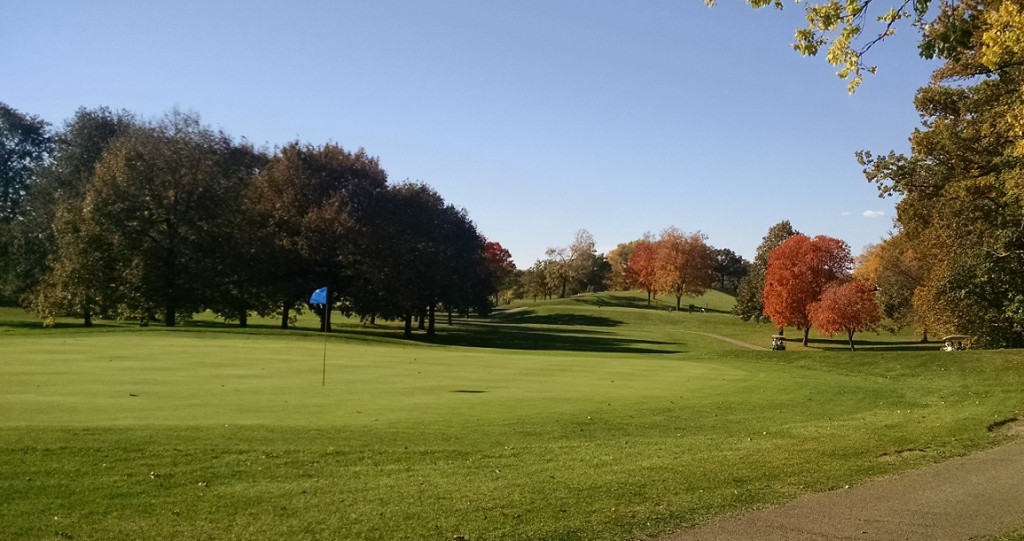
Holes: 18, plus driving range/learning center
Greens fee: $28
Established: 1919
Architect: William Clark, a Scotsman who also designed Gross (formerly Armour) in Minneapolis, Oak Ridge in Hopkins and — lost-course references a requirement when possible — the former Chisago Golf Club in Chisago City.
Notable: Part of the Columbia grounds used to be a lake — Sandy Lake, a shallow, reportedly unattractive body of water that dried up early in the 20th century. Sandy Lake’s successor of sorts is a water hazard between Columbia Golf Club’s 11th and 12th holes.
My original intent was to post only one photo from each course I visited or had photos from. But the view from a couple of spots on Columbia was so impressive on Oct. 22 that I had to take a post a couple more. They’re from my Android and cropped, so they might not look so great when expanded. But they are what they are.
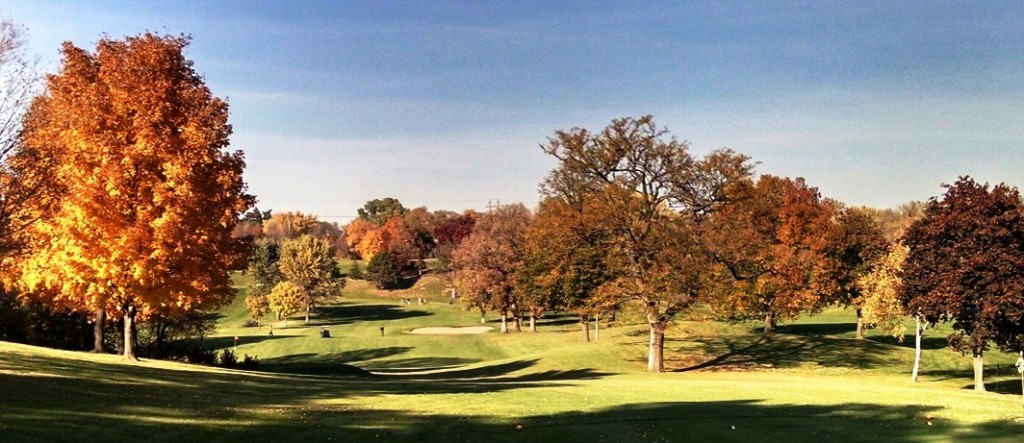
TPC of the Twin Cities, Blaine
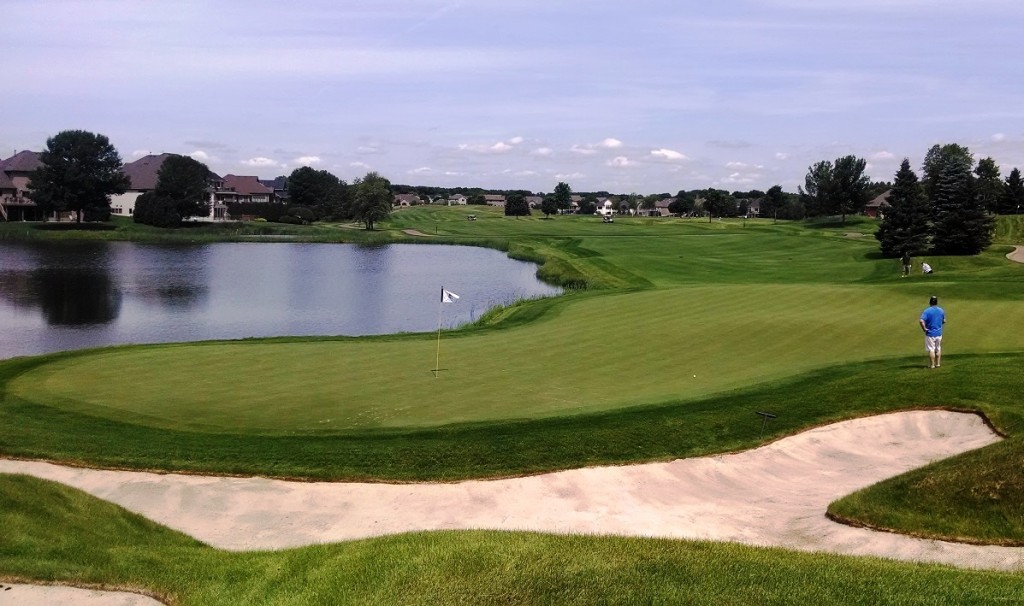
Holes: 18
Greens fee: The course is private, but its green fee is listed as $139
Established: 2000
Architect: Arnold Palmer, with Tom Lehman as design consultant
Notable: The course is home to the Champions Tour’s 3M Championship. That’s common knowledge, but what strikes me every time I’m there is that a course that’s darn hard for any weekend golfer is such a pushover for the pros. True, the 3M setup doesn’t call for an ardent guardianship of par, but the winning scores of the past 10 champions have totaled 185 under par. Never get into a skins game with those guys.
Majestic Oaks, Ham Lake
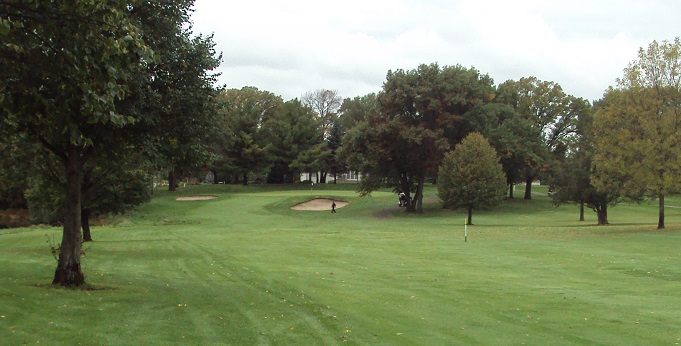
Holes: 45 (Signature 18, Crossroads 18, Executive Nine)
Greens fee: Signature $25.95, Crossroads $20.95, Executive $9.95
Established: 1965, as the nine-hole Golden Tee Country Club. Re-established as Majestic Oaks Country Club in 1972 with 18 holes; expanded to 45 holes in 1991 with the addition of the Executive Nine and the South Course (now known as the Crossroads Course)
Architects: Charles Maddox designed the original 18; Garrett Gill and George B. Williams designed the Crossroads Course.
Notable: Suburban sprawl here (that is intended as a purely good-natured observation). Besides 45 holes of golf, Majestic Oaks features the 46th Hole Bar & Grill, a wedding-and-events center, a dinner theater, and even a winter boot hockey league operating out of the metal shed next to the pro shop that doubles as a warming house. More nuggets, taken from “Under the Majestic Oaks,” published in 2012: The three courses have a total of 118 bunkers, 72 of them on the Signature Course. Water comes into play on 31 holes. Mark Mueller had won 12 men’s club championships as of 2012.
One more thing: The person who founded Majestic Oaks as Golden Tee in 1965 has a direct and important connection to a lost course on the Highway 65 corridor. More on that in a week or two.
Viking Meadows, East Bethel
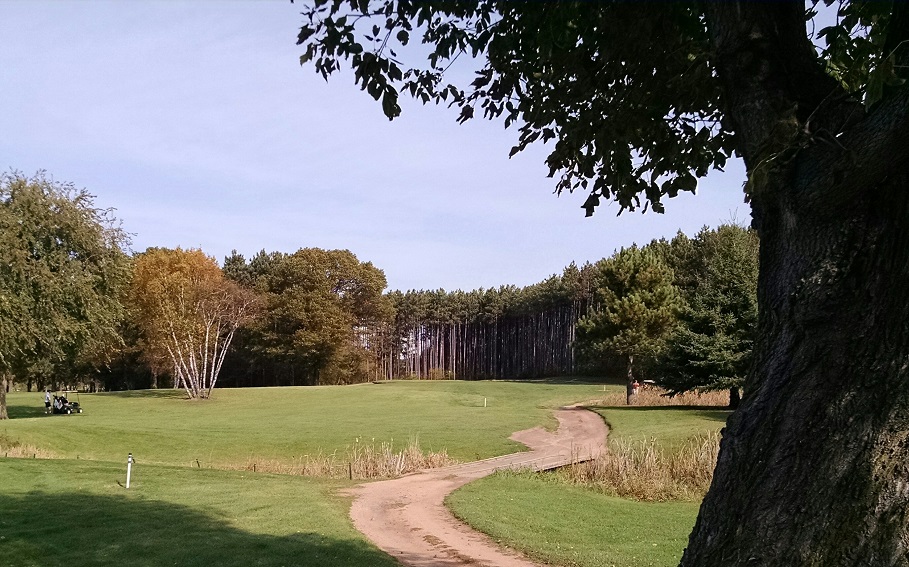
Holes: 18 (if you go online and see a reference to an executive nine, ignore it. That course was shut down a few years ago.)
Greens fee: $22
Established: 1989
Architect: Ron Olson (source: GolfDigest.com)
Notable: I got nothing. Sorry, but really almost nothing at all. I had time to spend only 10 minutes on the grounds and saw trees, relatively few bunkers and fairly ordinary greensites. That’s neither criticism nor endorsement. Would be glad to hear from someone who knows more about the place.
Sanbrook, Isanti
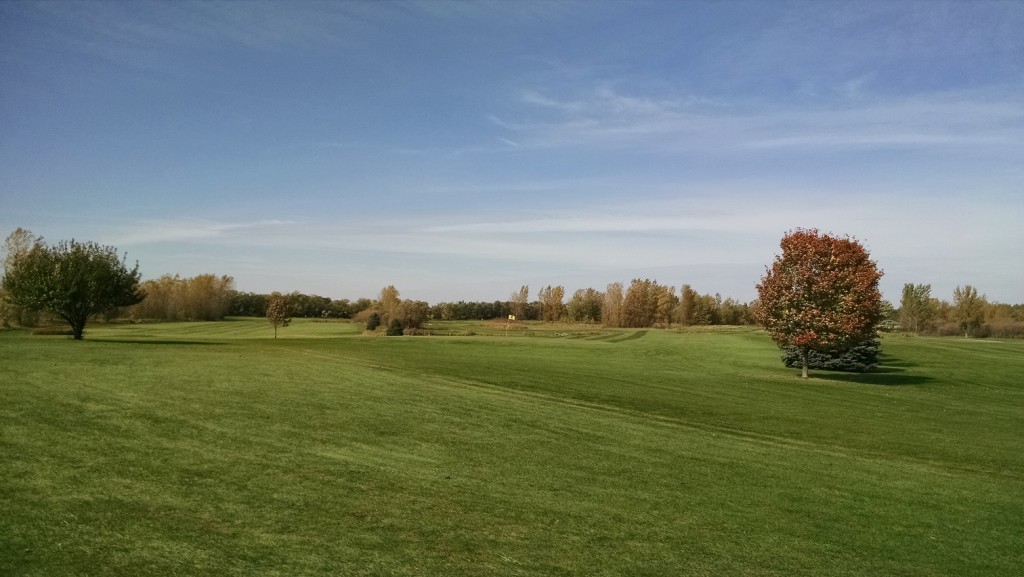
Holes: 27 (18-hole course and executive nine)
Greens fee: $22
Architect: Lyle O. Kleven
Established: 1995
Notable: Sorry, but I kinda flinched there when I had to type “architect” followed by an actual name. Hey, I really would rather not denigrate, but this looked a lot like 18 flagsticks cut into a moribund plot of land. The only definition I noticed was occasional routing around some marshland. I suspect that “utilitarian” was the intent, though, and that’s fine. Every golfer’s appetite is different. Here is one online review: “Beginner golfers can practice their technique on the short, flat … layout without worrying about obstacles frustrating them.” Knock yourself out, then. Kudos deserved on the autumn rate of $20 including cart, assuming I heard that right on my stop there.
Hidden Haven, East Bethel
No. 18, Hidden Haven, par 4, 328 yards
Holes: 18
Greens fee: $29
Architect: Mike Krogstad
Established: 1988; nine additional holes in 1999
Notable: My last, short stop on my way back from conducting old business, if you catch my drift, in the Cambridge-Isanti area.
This course intrigued me, even if based only on a 15-minute visit. It shot to the top of the list of courses I would most like to play in the Highway 65 corridor (Columbia is up there, too, and I’ve heard good things about Purple Hawk though have never played there). Anyway, a superficial look at Hidden Haven, plus a subsequent look via Google’s aerial photos, left me impressed. The nine on the east side of Polk Street appears fairly open, albeit with some bunkers and water. The nine on the west side of Polk appears more tree-lined.
If the greensite on No. 18 is any indication, course designer Mike Krogstad (an occasional golfer who designed only Hidden Haven and died in 2008 at age 49) did an excellent job of balancing playability and challenge. Much more thought appeared to go into the design of this course than some others I visited. From the aerial photos, the bunkering looks both varied and well-plotted. At 5,968 yards off the back tees (par 71), length probably is a drawback for a medium-to-long hitter, but I think a geezer-bunter like me could have a good time at Hidden Haven. At least until the inevitable dumping of a sleeve of balls with three fat wedges into a pond.
